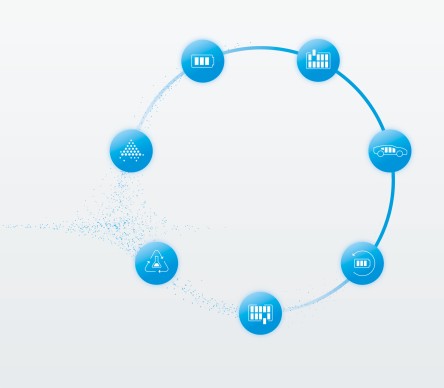The number of vehicles with electric drives is continuously increasing and is making a significant contribution to the decarbonisation of road traffic. However, at the end of the battery's life cycle, the question of how to recycle the materials inside the battery raises its head. Automation not only enables battery cells to be produced economically, but also allows the recycling processes to be precisely monitored and controlled. Valuable materials can be efficiently recovered from the batteries by using automated systems and then be reused. This guarantees a more sustainable and environmentally friendly value chain.

Overview of the battery life cycle
Start of the life cycle: clockwise from the left.
- Raw material preparation
- Cell production
- Module and pack assembly
- Integration into vehicle
- Remanufacturing/second life
- Dismantling
- Recycling and separation of raw materials
Safe battery cells with the right components
Choosing the right automation components is crucial for efficient battery cell production. If hese conain copper, nickel and zinc, they can lead to contamination in the battery cell and damage it through electrochemical processes. With the non-ferrous metalfreee F1A product portfolio from Festo, you are on the safe side. Find out more about clean batteries in our eBook.
Download e-book nowFesto product portfolio for battery production
Producing batteries is an extremely sensitive process. Each phase of the production environment, whether processing, transport or quality inspection, should therefore be clean.
Find out how to produce safe batteries with non-ferrous metal-free automation components in our catalogue 'Products for battery production'.